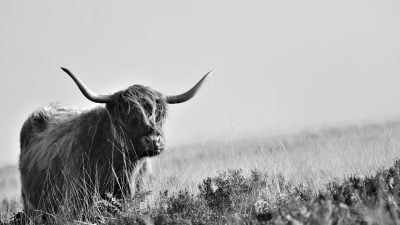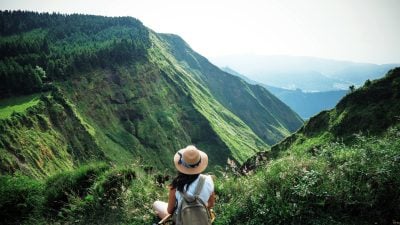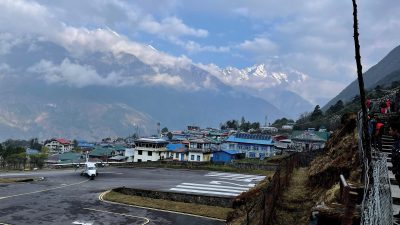Home / Latin America & Antarctica / 12 Fascinating Animals to See …
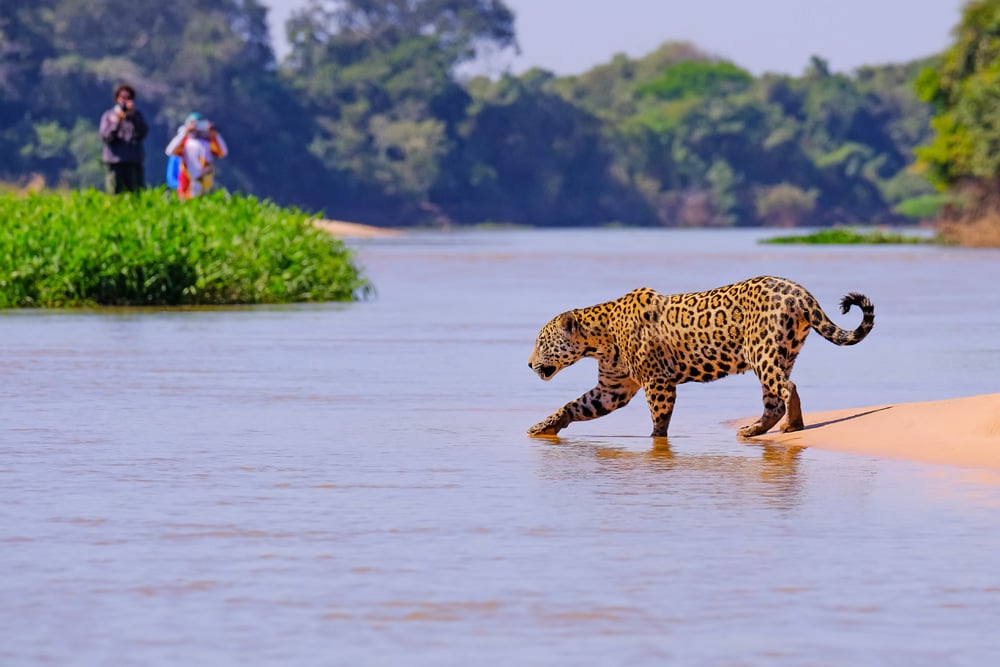
12 Fascinating Animals to See on South America Vacations
Africa and Australia might attract the lion’s share of wildlife travellers, but don’t sleep on South America, which is not only easily accessible to North American travellers, but also home to some incredible animals. Of course, South America has the Amazon, which has the largest concentration of wildlife on the planet, so it’s bound to have some fantastic animals. Because we love animals and the excuse to write about them, we’ve highlighted 12 fascinating animals to see on South America vacations. We’ve also shared where to go to see these animals to make planning a wildlife trip as easy as possible.
4 Amazing Mammals to see in South America
Alpaca and Llama
We’ve cheated off the bat and included these two camelids together because they’re equally adorable and a huge highlight of visiting the Andes. In fact, they’re probably one of the first things people think of when they think of South America and the Inca Empire. While lots of people cannot distinguish between the two animals, they do belong to different genus and stand apart physically. Llamas are taller and have longer legs, while alpacas are squatter with fluffier fur. Both animals are known for their wool; if you can get a sweater or scarf made from 100 percent alpaca, do it. Both animals are reasonably friendly and you’ll find them on farms, in towns, or wandering the hillsides of the Andes.
Where to see alpacas and llamas in South America?
The Sacred Valley of the Incas in Peru. You can even see llamas at Machu Picchu, as the rangers keep some llamas on the hillside to feed on the grass and keep it maintained. Think of them as natural lawnmowers.
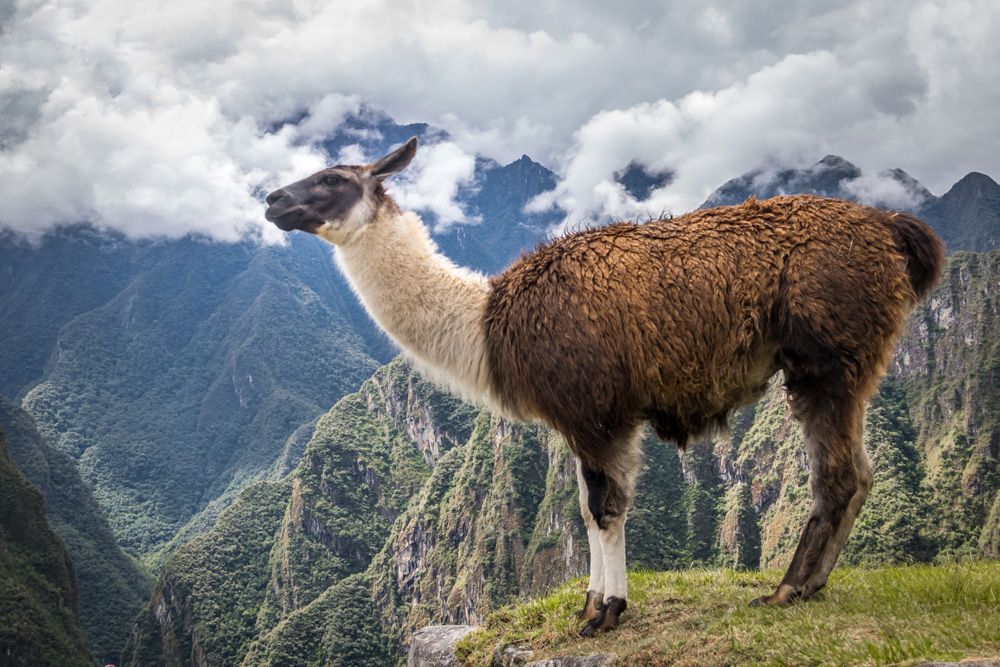
Capybara
The capybara is the world’s largest rodent and looks like a giant cross between a beaver and a rat, however much more adorable than that sounds. They’ve become popular online as photos of them bonding with cats, monkeys, and other critters have made them famous as some of the world’s most unflappable animals. They can grow twice as big as a beaver and weigh up to 150lbs. They spend most of their time in the water and are great swimmers, with partially-webbed toes and large noses that stay above the water at all times. Although their narrow eyes make them seem perpetually calm, they’re extremely alert animals due to a large number of predators in their natural environment. Some petting zoos let you interact with capybaras, but if you come across one in the wild, it’s best to keep your distance so as not to spook them.
Where to see capybaras?
The Pantanal in Brazil. This tropical wetland (the world’s largest) is home to a huge number of animals, not least of which are capybaras, which thrive in a wet and warm environment.
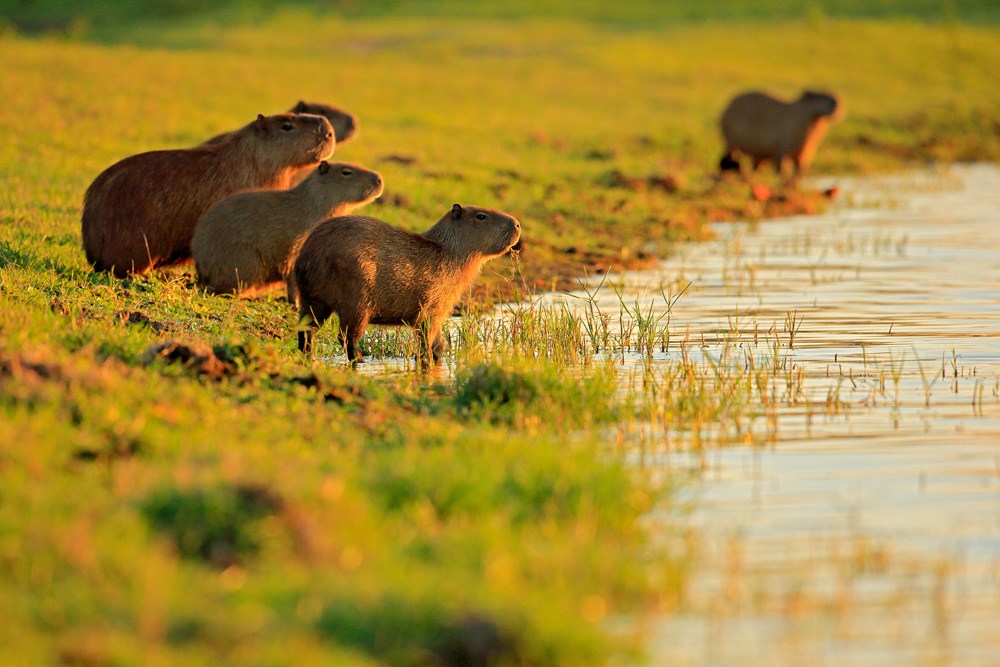
Howler Monkey
There aren’t as many monkeys in South America as there are in Asia and Africa, but there are still some memorable primates, especially the howler monkey, which is known for its deafening territorial call that may wake you up if you’re staying in the heart of the jungle on South America vacations. The howler monkey may have brown, black, and, most popularly, red fur and large throats with special vocal chambers that make their particular droning call. Their prehensile tail is unique amongst New World monkeys, which means that if you’re hiking through the Amazon and see a monkey hanging from its tail, it’s definitely a howler monkey.
Where to see howler monkeys?
Tayrona National Park in Colombia. You can find howler monkeys throughout the rainforests of Colombia, Ecuador, and Brazil, especially along the coastlines, but Tayrona is an accessible place with plenty of monkeys to see.

Jaguar
The jaguar is the largest cat in South America and, like most large cats, one of the most fascinating animals you can see in the wild. Jaguars are smaller than most other large cats due to their stocky legs and short tail. They’re generally around the same size as a leopard. But still, they’re the biggest cat in South America and beautiful, with rose-shaped spots across their fur. Their name derives from an indigenous word meaning “he who kills with one leap,” which gives you an idea that these cats are seriously good at jumping. They’re also good swimmers. You’re much more likely to find them swimming through rivers than almost any other large cat.
Where to see jaguars?
The Amazon Basin in Guyana. Although their territory extends beyond Guyana, the jaguar is the country’s national animal and one of its tourist highlights.
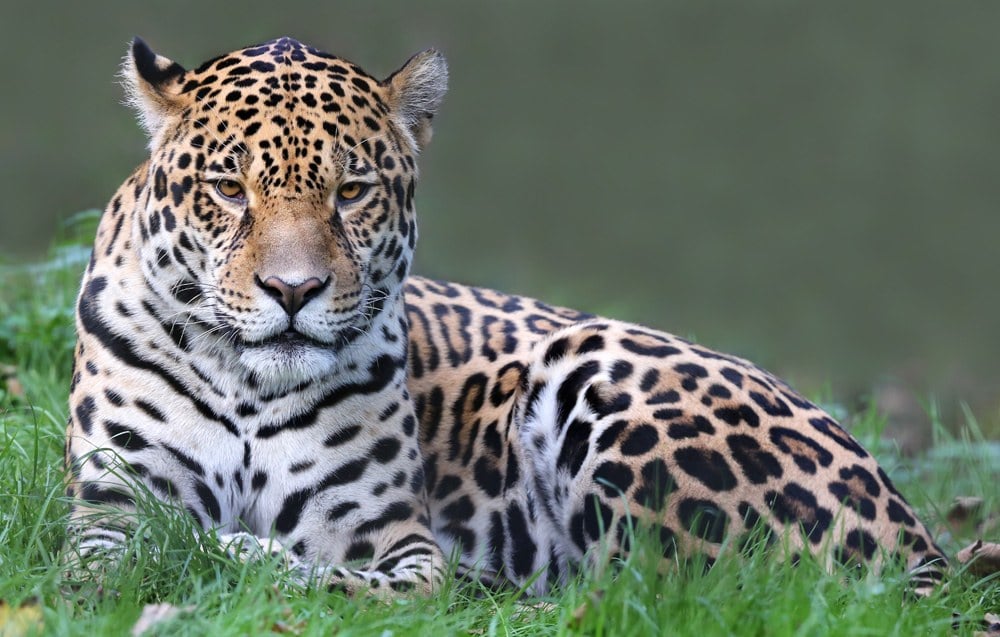
Three-Toed Sloth
The sloth sanctuary in Costa Rica may be the best place in the world to see these adorable and slow animals, but you can find them in much of South America as well. The three-toed sloth is one of the slowest and funniest mammals in the world. They sleep between 15 and 20 hours a day and spend almost all of their time in trees. They eat leaves and fruit, get most of their water from the plants they eat, and even mate and give birth while hanging from branches. In fact, they’re extremely vulnerable whenever they do descend to the ground, as their hind legs are too weak to support them, forcing them to drag themselves forward with their long claws. Surprisingly, they fair better in water, as they’re good swimmers.
Where to see three-toed sloths?
The Amazon Basin in Peru. Odds are you could spot three-toed sloths during Amazon adventures in Ecuador, Colombia, or Brazil, but the Amazonian Basin in Peru is a safe spot to see these hilarious, tree-hanging mammals on South America vacations.
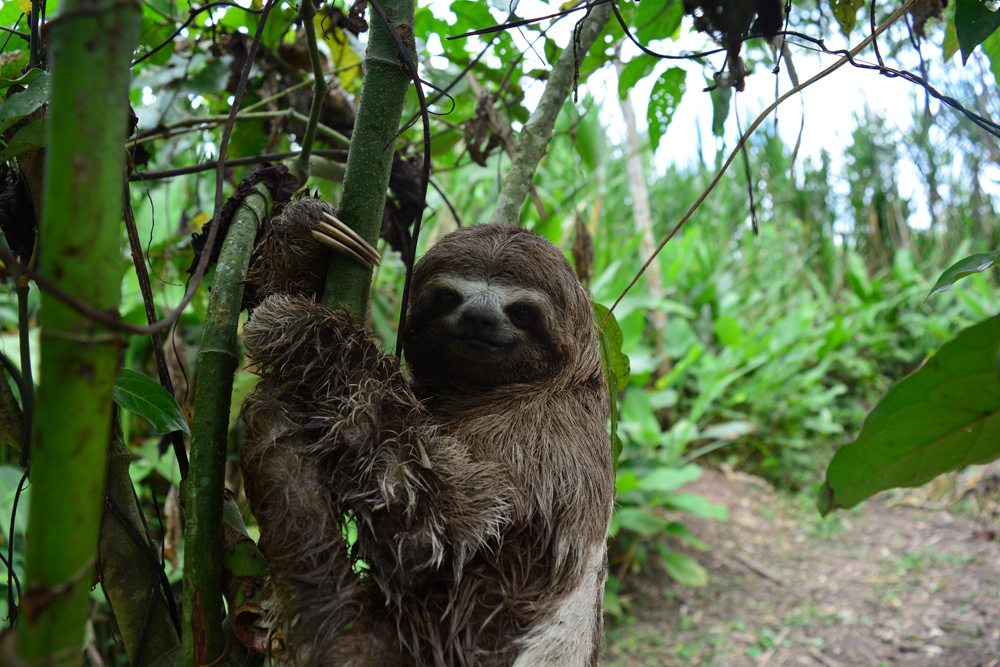
Birds to see in South America
Andean Condor
The Andean condor is one of the largest birds on the planet, with a wingspan over 3m. They live in some of the windiest reaches of the Andes Mountains, relying on the windy updrafts to compensate for their large weight and help them stay in the air. It’s majestic to see them circling high above the mountains of South America. Of course, as relatives of the turkey and carrion eaters, it’s likely that if you do see condors circling overhead, they’ve spotted some meat below and are waiting until you scram to land and feast on it.
Where to see Andean condors?
The Ascencio Valley in Chile or El Calafate in Argentina. You can find Andean condors all through the Andes in Ecuador, Peru, Bolivia, Chile, and Argentina, but the reaches of Patagonia in Chile and Argentina are your best bets to spot them during a hike.

Toco Toucan
Yes, the bird that sells the cereal. The toco toucan is so colourful and absurdly dimensioned that you’d almost be mistaken for thinking it’s simply a cartoon creation. Of course, these birds are very much real and live in the jungles of South America. Their famous bills reach almost 20cm long. Although you’d be mistaken for thinking their size is key to mating rituals, both males and females have the large bills. Instead, the bills are more essential to feeding, as they can reach branches that cannot support the large birds, as well as skin the fruit they eat. You’ll find toucans in the canopy of the rainforest, nesting in the holes of the large trees.
Where to see toco toucans?
The Pantanal in Brazil. This massive wetland is home to a stunning number of species, including the toucan, which feasts off the abundant fruit and even the odd insect and reptile in the forest canopy.
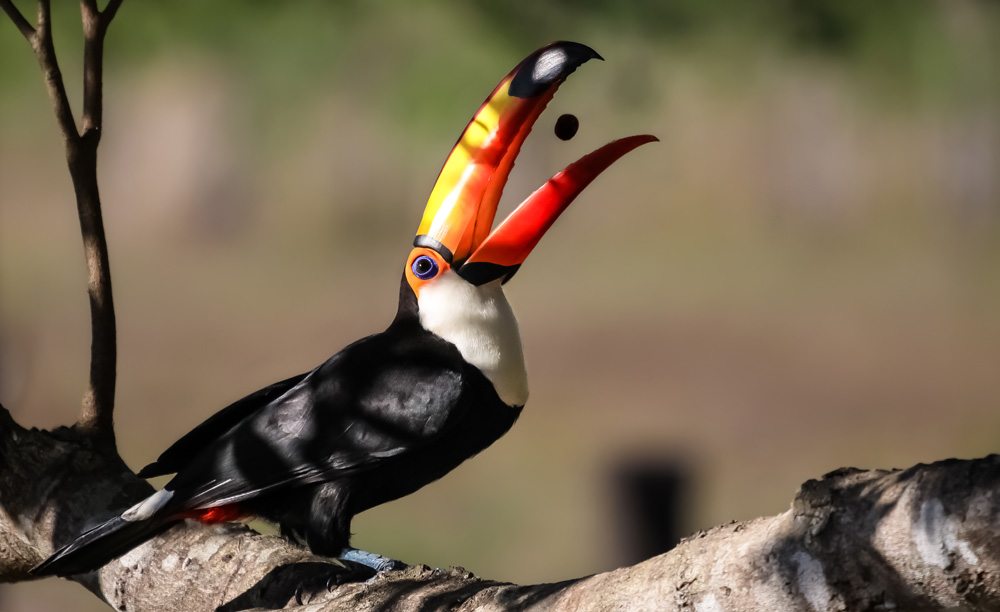
Three Unmissable Reptiles to See in South America
Black Caiman
Although caimans are generally smaller than other animals in the crocodile family, the black caiman is actually larger than the American alligator and the largest predators in the Amazon Rainforest. As the apex predator, they feast on any prey they can find along the freshwater rivers and lakes of the continent. The black caiman can reach up to 5m long and are known for their dark colouring, which makes them hard to spot at night. If you do happen to spot them during a nighttime jungle safari, consider yourself lucky.
Where to see black caimans?
Manu National Park in Peru or Parque Nacional de Amazonia in Brazil. Black caimans can be found in most countries in South America, but these parks in the Amazon Basin are good bets for wildlife lovers.
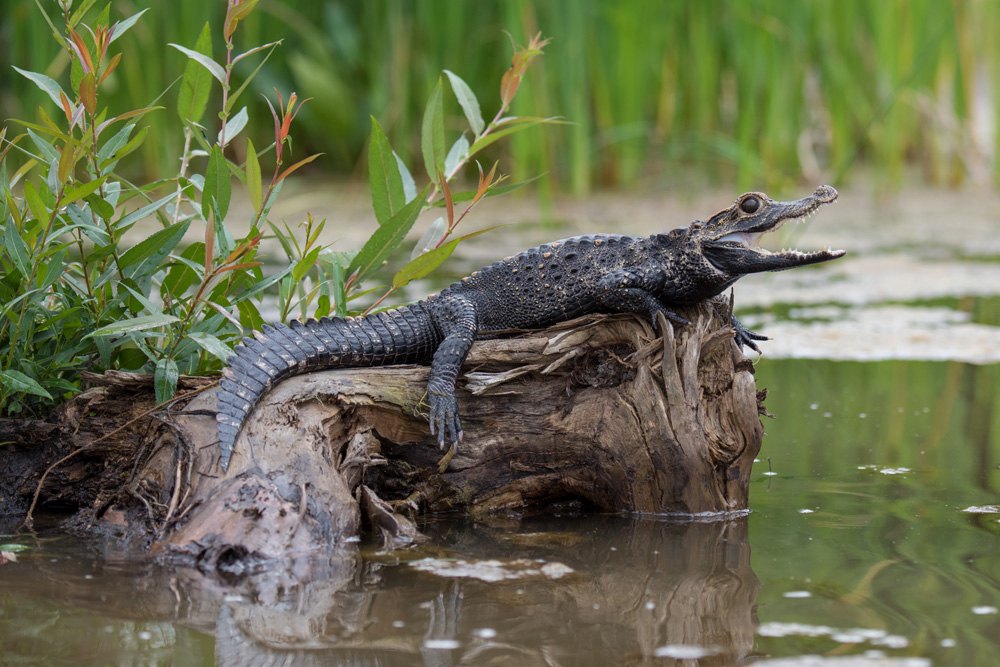
Galapagos Tortoise
The Galapagos tortoise is one of the oldest animals on the planet, living well over 100 years, with records of some having lived up to 152 years. They can grow almost 2m long and weigh up to 550lbs. As the name suggests, these tortoises are native to the Galapagos Islands, where they live a carefree life of eating grass and cactus, sun tanning, and napping up to 16 hours a day. Charles Darwin popularized tales of these tortoises after his visit to the islands in 1835 and since then, people have been fascinated with these land tortoises on this small island chain in the Pacific Ocean.
Where to see Galapagos tortoises?
Santa Cruz Island in Ecuador. It doesn’t take a genius to point out that you can find a Galapagos tortoise in the Galapagos Islands (in fact, the name of the islands comes from the Spanish word for tortoise), but Santa Cruz Island, home to the Charles Darwin Research Station, is the best island to see these ancient reptiles.
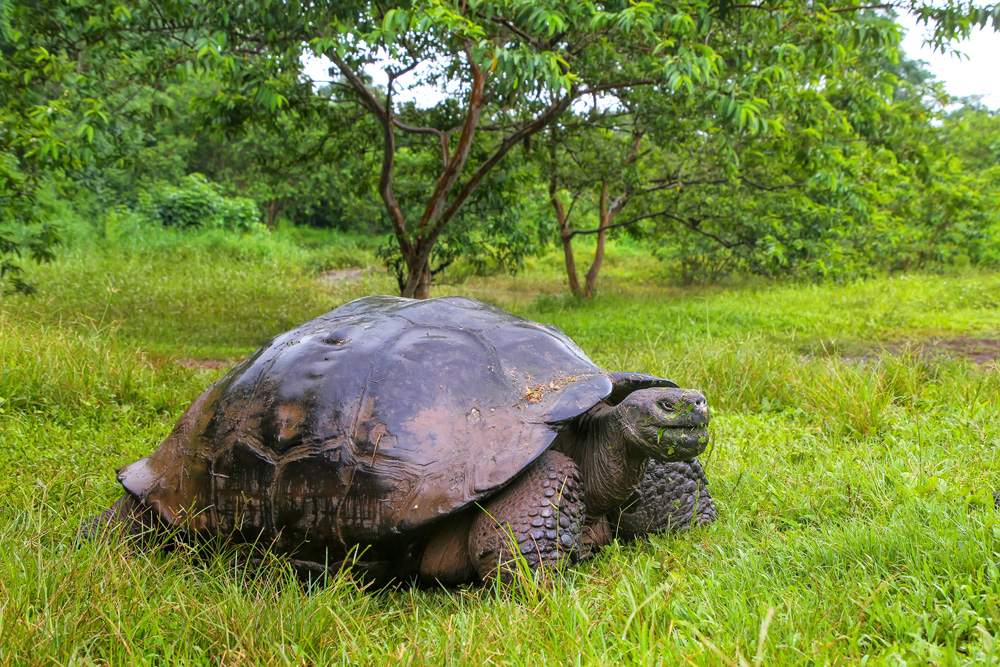
Green Anaconda
This may be the last animal you ever want to come across in the wild, but it’s undeniably fascinating. The green anaconda is the largest snake in the world. Although pythons can grow longer than anacondas, anacondas weigh almost twice as much as pythons, owing to their enormous girth. They can grow up to 8m long, which is either exhilarating or terrifying to consider. They don’t have poison fangs, so they constrict their prey and then proceed to swallow them whole, digesting them over weeks or even months. Although they’re massive, anacondas can move quickly in the water. These aren’t cuddly animals by any means, but they are an example of the biodiversity and sheer animal scale that only exists in South America.
Where to see green anacondas?
The Amazon Basin in Brazil. A river cruise is the best way to see one as they stay near the waterways, and this ensures that you have enough distance from them. Green anacondas are rare to see, so if you do spot one, consider yourself lucky (even if the sight sends chills down your spine).
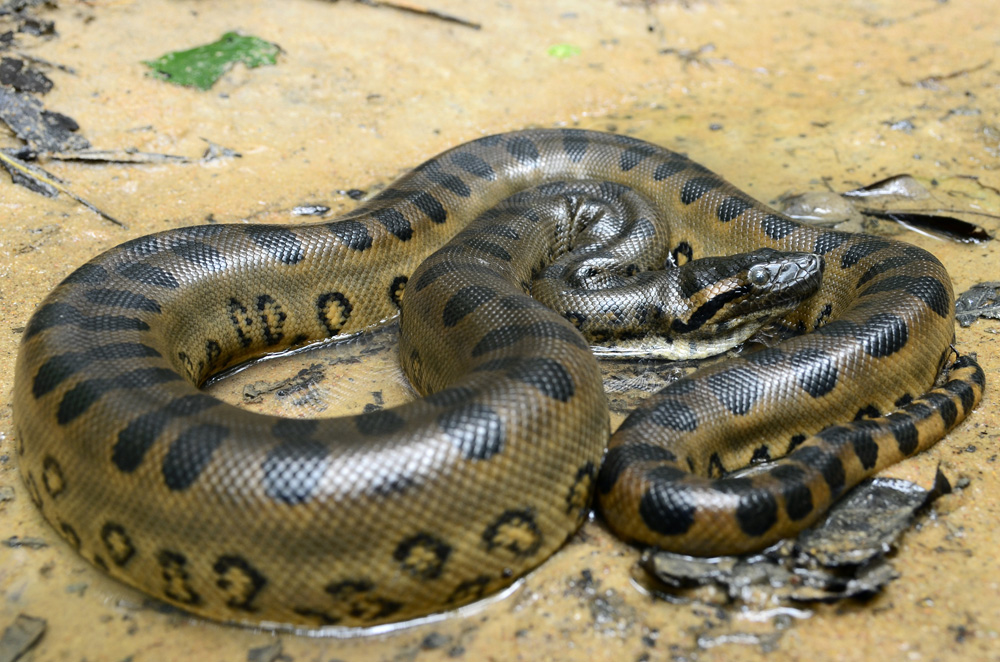
Unique Fish to see in South America
Arapaima
The size of this fish will blow your mind. Also known as the paiche or pirarucu, the arapaima is one of the largest freshwater fish in the world, reaching up to 3m long and weighing over 400lbs. They are carnivorous, feasting on other fish, and live in the Amazon Basin. In addition to their size, the arapaima is also fascinating for being an air-breathing fish, meaning they need to come to the surface for air every 10 to 20 minutes. Due to their size, the arapaima is a popular target for fishermen, leading to overfishing in many parts of South America. Although it’s unlikely you’ll be in the water during a trip to the Amazon, if you were to wade into the water and try to pick one of these fish up, you’d likely have to have two extra friends help you with the weight and size.
Where to see arapaima?
The Amazon River. These fish live in the rivers and lakes all along the Amazon Basin, but any river cruise along the Amazon, either in Peru, Ecuador, or Brazil will present an opportunity to see them in the wild.
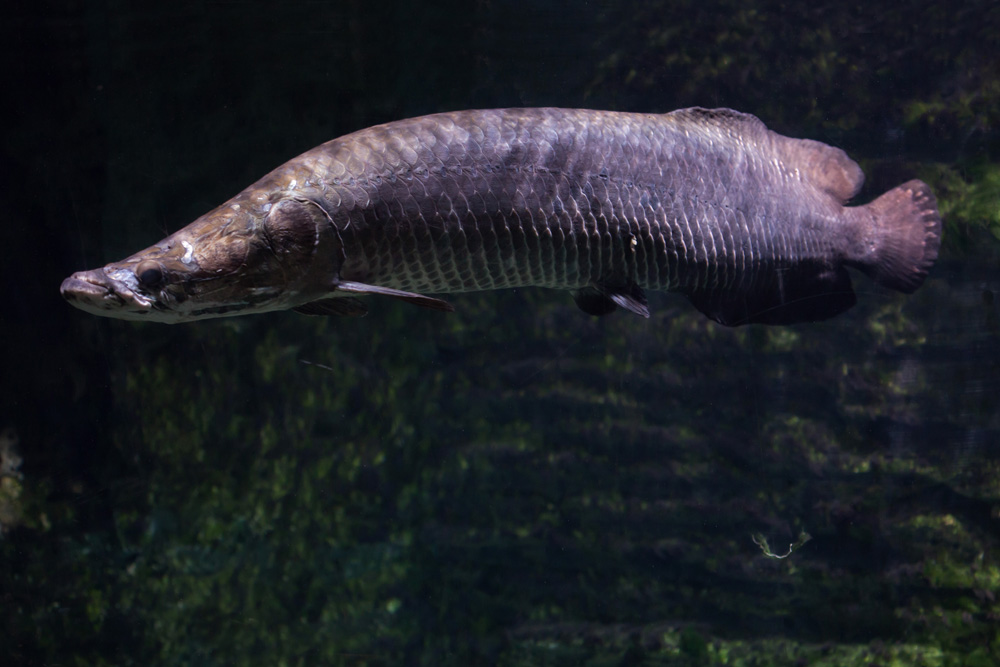
Red-Bellied Piranha
No fish has as scary a reputation as the piranha, which has spawned horror movies and all manner of urban legends about stripping the flesh from living things in 30 seconds flat. As with most things, the reality is much less scary than the legend. While piranha do have razor-sharp teeth and are ferocious meat-eaters, they are relatively harmless to humans and not particularly aggressive. They live in the lakes and rivers of the Amazon basin, feasting on other fish, shrimp, worms, and whatever small land animals come their way. They operate in schools of over more than 100 fish and are known for their sparkly red belly, which makes them seem to glow in the water.
Where to find red-bellied piranhas?
The Amazon Basin in Peru or Ecuador. As with the arapaima, a river cruise along the Amazon is the best opportunity to see piranhas in their natural habitat.
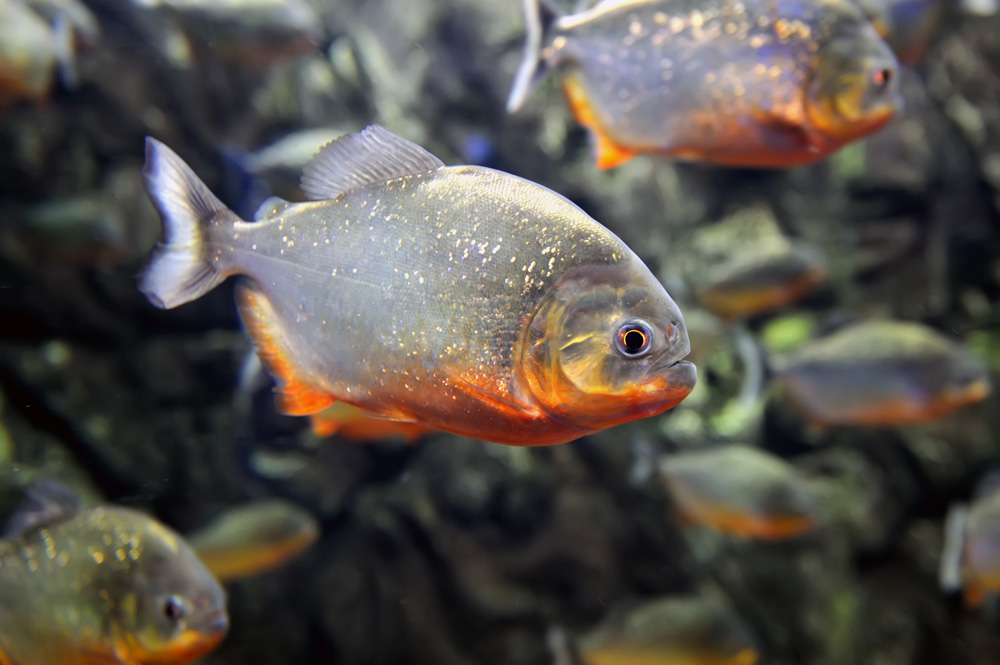
Get more travel inspiration by email.
Subscribe
0 Comments

Get the latest travel trends & hear about the best deals on vacations around the world.
If you’re a Globetrotter, these are the newsletters for you!
